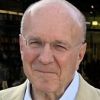10 Math History Books That Separate Experts from Amateurs
Recommended by Matt Parker, Sean Carroll, and Simon Winchester, these Math History books offer unmatched insights into mathematics' rich past.




What if the story behind every formula and theorem was as riveting as a novel? Mathematics isn’t just about numbers; it’s a dramatic saga of ideas, rivalries, and discoveries that have shaped human civilization. Exploring math history reveals how abstract concepts emerged from real people wrestling with fundamental questions—questions that still resonate today.
Among those who champion this exploration are Matt Parker, a math communicator who delights in uncovering the beauty of geometry, and Sean Carroll, a physicist who finds inspiration in the human stories behind mathematical breakthroughs. Simon Winchester, a seasoned author, appreciates the poetic narratives that bring prime numbers to life. Their endorsements highlight the power of these books to deepen your understanding of math’s evolution.
While these expert-curated books provide proven frameworks and fascinating stories, readers seeking content tailored to their background, skill level, or specific interests might consider creating a personalized Math History book that builds on these insights and fits your unique learning journey.
Recommended by Matt Parker
Author of Humble Pi and math communicator
“There is no better tour guide to the wonders of geometry than the delightful David Acheson.”
by David Acheson··You?
by David Acheson··You?
David Acheson's extensive academic background and passion for teaching geometry led him to craft this engaging exploration of the subject's rich history and practical significance. You’ll uncover why fundamental truths like Pythagoras's theorem hold firm, and how geometric concepts like tangents relate to real-world phenomena such as ballistic speed. The book blends historical anecdotes with mathematical elegance, making it especially rewarding if you’re curious about the personalities shaping geometry or want to see math’s beauty beyond formulas. It's ideal for anyone looking to deepen their understanding of geometry's role within the broader landscape of mathematics.
by John Stillwell··You?
by John Stillwell··You?
John Stillwell’s deep dive into the evolution of mathematical proof offers you a fascinating journey from Euclid’s foundational geometry to the complexities uncovered by Gödel and Turing. With a clear focus on how proof shapes knowledge across diverse mathematical fields like algebra, topology, and number theory, you’ll gain insight into why proof is not just a method but a driving force behind mathematical discovery. For example, the book’s chapters on non-Euclidean geometry and the limits of provability reveal both the power and boundaries inherent in mathematical reasoning. This book is ideal if you want to understand how logical rigor has historically influenced mathematics and continues to challenge what can be proven.
by TailoredRead AI·
This personalized book explores the vast landscape of math history, tailoring its rich narratives to your unique interests and background. It covers pivotal moments, key figures, and transformative ideas that have shaped mathematics across eras, providing a clear pathway through complex developments. By focusing on your specific goals, the book reveals connections between historical breakthroughs and the evolution of mathematical thought, making the subject accessible and engaging. The tailored approach ensures that you delve into areas you find most compelling, whether it’s ancient contributions, renaissance discoveries, or modern innovations. It offers a custom synthesis of collective knowledge that deepens your appreciation and mastery of math history.
Recommended by Clifford Pickover
Author of The Math Book
“A fascinating tour of the history of mathematics, provided by snapshots of the lives of ingenious mathematicians who guided humanity on a vast intellectual journey. From Thales to Brahmagupta, Ramanujan, Mandelbrot, and Mirzakhani, we stand in awe of their perseverance and brilliance.”
by Alfred S. Posamentier, Christian Spreitzer··You?
by Alfred S. Posamentier, Christian Spreitzer··You?
What happens when seasoned mathematics educators Alfred S. Posamentier and Christian Spreitzer turn their attention to the history of math? They craft a compelling collection of fifty biographical sketches that reveal not just mathematical breakthroughs but the human stories behind them. You’ll discover how Isaac Newton’s scientific obsessions intertwined with alchemy, or how Sophie Germain overcame gender barriers to contribute to elasticity theory. The book offers vivid portraits that make complex concepts approachable, especially in chapters focusing on Emmy Noether’s abstract algebra and Ramanujan’s self-taught genius. If you’re intrigued by the minds shaping mathematics rather than dry theorems, this book brings the past alive with clarity and context.
Recommended by Sean Carroll
Physicist at Caltech and SFI, podcast host
“The search for mathematical truth, no matter how abstract, is ultimately carried out by flesh-and-blood people. In this readable book, Ian Stewart makes math accessible by humanizing its greatest practitioners, simultaneously illuminating who they were and the discoveries they made. You cannot read it without being struck by admiration for the driven souls who created mathematics over the centuries.”
Drawing from decades of research and public engagement, Ian Stewart presents a vivid tapestry of mathematical history through the lives of 25 pioneering figures. You’ll uncover the human stories behind major breakthroughs, from Archimedes’ foundational principles to Emmy Noether’s groundbreaking work on symmetry. The book offers insights into both celebrated and overlooked contributors, like Ada Lovelace, bridging technical achievements with their personal challenges and societal impacts. If you’re eager to deepen your understanding of how math evolved and who shaped it, this book provides a thoughtful and accessible narrative that connects the dots across centuries.
Recommended by Ian Stewart
Emeritus professor of mathematics, University of Warwick
“In this gripping story of a fundamental mathematical discovery, outrageous historical characters in Renaissance Italy battle both the cubic equation and each other. Loved it!”
by Fabio Toscano, Arturo Sangalli··You?
by Fabio Toscano, Arturo Sangalli··You?
Fabio Toscano, a seasoned science writer for newspapers and television, brings to life a gripping chapter of mathematical history with this vivid retelling of the Renaissance duel between Niccolò Tartaglia and Gerolamo Cardano. You’ll gain a nuanced understanding of how personal rivalry and intellectual ambition collided to reveal the cubic equation’s solution—a problem that confounded mathematicians for centuries. The book stands out by blending the cultural vibrancy of sixteenth-century Italy with the technical challenges of algebra, exploring not just the math but the human drama behind it. If you’re drawn to stories where historical context and mathematical breakthroughs intersect, this book will deepen your appreciation of algebra’s roots.
by TailoredRead AI·
This tailored book explores the rich history and diverse methods of mathematical proofs, crafted to match your background and goals. It guides you through a personalized, step-by-step plan that would cover fundamental proof techniques alongside their historical development, revealing how proofs shaped mathematical thinking over centuries. By focusing on your interests, it offers a clear pathway through complex concepts, blending the evolution of mathematical logic with practical understanding. Throughout this personalized journey, the book examines classic and modern proof styles, connecting historical insights with active learning. Tailored to accelerate your comprehension, it reveals the human stories and intellectual breakthroughs behind proofs, making the subject accessible and engaging at your pace.
Recommended by Simon Winchester
New York Times bestselling author
“This fascinating account, decoding the inscrutable language of the mathematical priesthood, is written like the purest poetry.”
by Marcus du Sautoy··You?
by Marcus du Sautoy··You?
Unlike most math history books that focus simply on biographical sketches, Marcus du Sautoy’s "The Music of the Primes" delves deeply into the mathematical quest to understand prime numbers through the lens of Bernhard Riemann’s groundbreaking work. You’ll explore the evolving attempts to decode prime distributions, including the Riemann Hypothesis and its significance within number theory, with chapters that reveal both historic milestones and ongoing challenges. This book suits anyone fascinated by the intersection of history, mathematics, and unsolved problems, offering insight into how abstract theory shapes modern mathematical thinking. It isn’t a light read, but it richly rewards those eager to grasp why primes continue to captivate mathematicians.
Recommended by Paul Graham
Co-Founder of Y Combinator
by Euclid, Thomas Little Heath··You?
by Euclid, Thomas Little Heath··You?
Euclid, often called the father of geometry, crafted a work that became the backbone of mathematical learning for centuries. In "The thirteen books of Euclid's Elements," you encounter a systematic, axiom-based approach that lays out geometry, number theory, and mathematical proofs with remarkable clarity. This book not only presents foundational theorems but also shows how earlier mathematicians' ideas were synthesized and expanded upon. If you're diving into the roots of mathematical thought or seeking to understand the rigorous logical structures behind geometry, this text offers direct exposure to the original framework that shaped modern mathematics. Be aware, it demands patience and a willingness to engage with classical deductive reasoning, so it suits those serious about math history and theory.
Recommended by Phil Plait
Science communicator and author
“Also, the thread author's book is called "Beyond Measure", which I think may be the single best book title I've heard in years. It's phenomenally elegant.” (from X)
by James Vincent··You?
James Vincent, a seasoned technology and society reporter at The Verge, explores the surprising influence of measurement throughout history in this book. You’ll journey from ancient Egyptian cubits to modern quantum constants, gaining insight into how measurement shaped civilizations, politics, and knowledge itself. Chapters delve into the French Revolution’s role in the metric system’s birth and the ongoing tension between metric and imperial units, revealing measurement’s cultural and political weight. This book suits you if you’re curious about the hidden forces behind everyday standards and how numbers govern our understanding of reality.
Recommended by Kirk Borne
Principal Data Scientist, PhD Astrophysicist
“Some fun with gentle chaos, the golden ratio, and stochastic number theory, with gaming applications: Learn all about the Golden Ratio in this fantastic book:” (from X)
This isn't another math history book promising dry facts; Mario Livio, an astrophysicist and head of the Science Division at the Hubble Space Telescope Institute, explores the Golden Ratio with both scientific rigor and narrative flair. You learn how this mysterious number, phi, weaves through art, nature, and architecture—from the pentagram's geometric origins to its appearance in nautilus shells and Renaissance masterpieces. The book also delves into the human fascination with phi, spotlighting figures like Fibonacci and Kepler, which adds historical depth to the mathematical concepts. If you appreciate a blend of mathematics, history, and culture, this book offers a richly layered journey, though it might not suit those seeking purely technical treatments.
by Michael Brooks··You?
by Michael Brooks··You?
What if everything you knew about the origins of mathematics was incomplete? Michael Brooks, a science writer with a PhD in quantum physics, argues that math is not just abstract numbers but a foundational force behind human civilization itself. Through vivid narratives—from ancient tax collectors who used numeracy to build empires, to Renaissance painters and modern-day innovators—Brooks reveals how mathematical concepts shaped societal structures, technology, and exploration. You’ll uncover how mathematical ideas like geometry and logarithms fueled everything from navigation to moon landings, offering insights into the interplay between human progress and numbers. This book suits anyone intrigued by the deep roots of math in culture and history, though it’s less about technical math and more about its human story.
Get Your Personal Math History Guide Fast ✨
Stop wading through generic books. Receive tailored math history insights in 10 minutes.
Trusted by math enthusiasts and professionals worldwide
Conclusion
These 10 books together paint a rich tapestry: from Euclid’s axioms to the human dramas of Renaissance Italy, and from the mysteries of prime numbers to the cultural impact of the Golden Ratio. They invite you to see mathematics as a living story shaped by individuals and ideas.
If you’re drawn to biographies, start with Math Makers and Significant Figures to meet the minds behind the math. For deeper dives into concepts and their proofs, The Story of Proof and The Wonder Book of Geometry offer rigorous yet engaging approaches. To understand math’s role in civilization, The Art of More and Beyond Measure provide captivating narratives.
Alternatively, you can create a personalized Math History book to bridge the gap between general principles and your specific situation. These books can help you accelerate your learning journey and appreciate the rich legacy of mathematics.
Frequently Asked Questions
I'm overwhelmed by choice – which Math History book should I start with?
Starting with Math Makers is a great way to meet key mathematicians through engaging stories. It offers a human perspective that makes math history accessible and inspiring for all levels.
Are these books too advanced for someone new to Math History?
Not at all. Books like The Wonder Book of Geometry and Significant Figures balance depth with readability, making them suitable for beginners who want to grasp core ideas and stories.
What's the best order to read these books?
Begin with biographies like Math Makers, then explore thematic books such as The Story of Proof. Finish with specialized topics like The Music of the Primes for a deeper challenge.
Do I really need to read all of these, or can I just pick one?
You can definitely pick one that suits your interest. For example, if prime numbers fascinate you, start with The Music of the Primes. Each book stands strong on its own.
Which books focus more on theory vs. practical application?
The Story of Proof and The Wonder Book of Geometry lean more into theoretical foundations, while The Art of More connects math history with civilization’s practical developments.
How can personalized Math History books complement these expert recommendations?
Personalized books tailor expert insights like those in these titles to your background and goals, making complex stories and concepts more relevant and easier to apply. Learn more here.
📚 Love this book list?
Help fellow book lovers discover great books, share this curated list with others!
Related Articles You May Like
Explore more curated book recommendations









